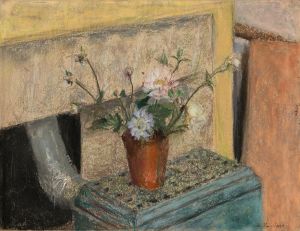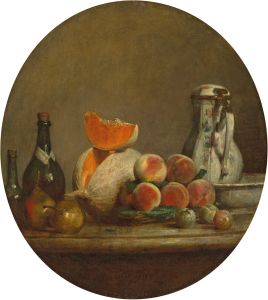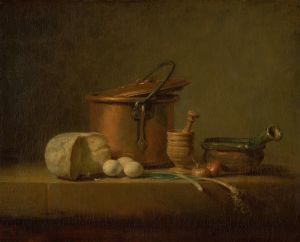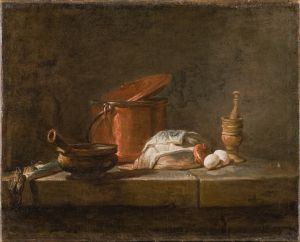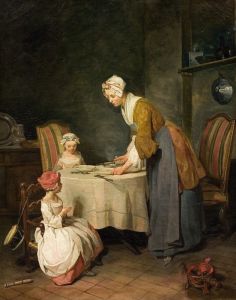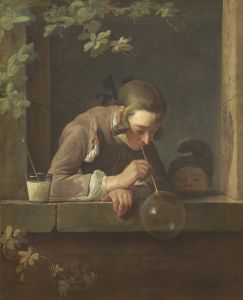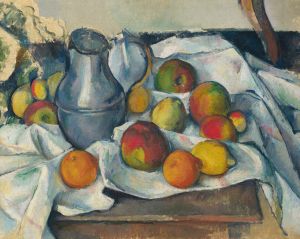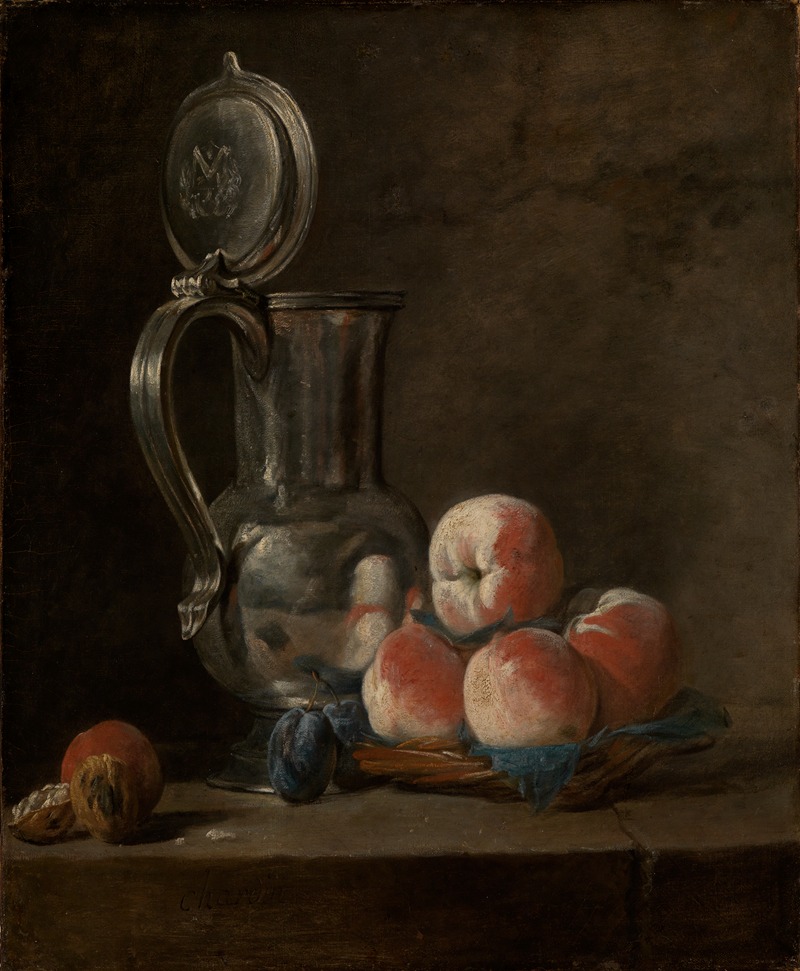
Still life with pewter jug and peaches
A hand-painted replica of Jean Siméon Chardin’s masterpiece Still life with pewter jug and peaches, meticulously crafted by professional artists to capture the true essence of the original. Each piece is created with museum-quality canvas and rare mineral pigments, carefully painted by experienced artists with delicate brushstrokes and rich, layered colors to perfectly recreate the texture of the original artwork. Unlike machine-printed reproductions, this hand-painted version brings the painting to life, infused with the artist’s emotions and skill in every stroke. Whether for personal collection or home decoration, it instantly elevates the artistic atmosphere of any space.
Jean Siméon Chardin's Still Life with Pewter Jug and Peaches is a celebrated example of the artist's mastery in the genre of still life painting. Chardin, a French painter born in 1699 and active during the 18th century, is widely regarded as one of the most important still life painters of his time. His works are known for their quiet elegance, meticulous attention to detail, and ability to elevate everyday objects into subjects of profound beauty and contemplation.
This particular painting, Still Life with Pewter Jug and Peaches, exemplifies Chardin's skill in rendering textures, light, and composition. The artwork features a simple arrangement of objects: a pewter jug, a few ripe peaches, and other elements carefully placed on a table. The muted color palette and soft lighting create a harmonious and serene atmosphere, drawing the viewer's attention to the subtle interplay of light and shadow on the surfaces of the objects. Chardin's ability to depict the tactile qualities of materials—such as the smooth skin of the peaches, the cool metallic surface of the jug, and the rough texture of the tablecloth—is a hallmark of his style.
Chardin's still lifes often reflect his interest in the quiet beauty of domestic life and the ordinary objects that surround us. Unlike many of his contemporaries, who focused on grand historical or mythological themes, Chardin chose to depict scenes of everyday simplicity. This approach earned him recognition and respect during his lifetime, and he became a member of the prestigious Académie Royale de Peinture et de Sculpture in 1728.
The exact date of Still Life with Pewter Jug and Peaches is not definitively documented, but it is consistent with Chardin's mature period, during which he produced many of his most famous still lifes. The painting is now housed in a museum collection, where it continues to be admired for its timeless appeal and technical brilliance.
Chardin's work has influenced generations of artists and remains a cornerstone of still life painting. His ability to find beauty in the mundane and to convey a sense of quiet dignity through his art has ensured his lasting legacy in the history of Western art.







